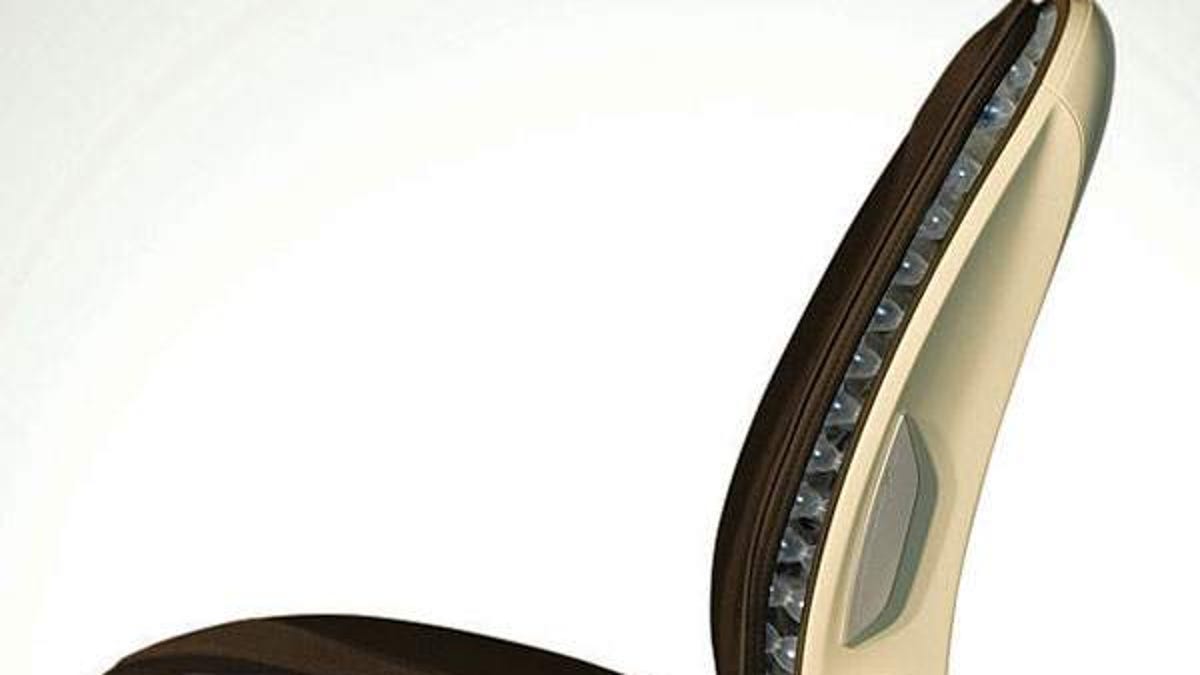Faurecia: Foamless seat a 'game-changer'
Automotive News reports on Faurecia's new seat design, which has the potential to reduce materials usage and improve automotive efficiency.

DETROIT--French auto supplier Faurecia SA thinks the next generation of automotive seating could eliminate polyurethane foam.
With its concept Sustainable Comfort Seat, the company replaces foam inside the seat with two sheets of injection-molded thermoplastic polyurethane. The design echoes the visible structure in some athletic shoes and the molded seats of office chairs.
The twin-sheet structure is part of a seat system that is 17 percent lighter than standard seats and 30 millimeters thinner, resulting in more legroom for rear-seat passengers.
The entire seat also uses an injection-molded nylon and long-glass-fiber structural frame that replaces steel and an injection-molded head restraint in place of foam and steel.
"There are multiple innovations in here," said Jay Hutchins, a product planning manager, during an interview last month at Faurecia's North American technical center in suburban Detroit.
Faurecia introduced the seat as part of its Light Attitude concept interior during the Los Angeles Auto Show in November. Since then, the company has been showing it to individual automakers.
No more foam
Lighter and thinner seats have been a target for automakers and suppliers for the past few years. Most research has emphasized reducing the bulk through improved urethane foam that provides the needed support in a smaller package.
Faurecia's seat eliminates the foam in favor of the injection-molded core. Two sheets of thermoplastic polyurethane are designed with cavities and raised areas to provide both support and flexibility where needed, said Olivier Boinais, the company's industrial design manager.
The two sheets are vibration-welded and joined with an injection-molded outer shell at the rear of the seat and a textile cover.
The model that Faurecia is showing to potential customers makes that inner structure visible--just as Nike made its molded structure visible in the heel of its Air athletic shoes--although it also can be completely covered, Boinais said.
"This is really, really a game-changer," he said.
The seat is not the only manufacturing shift in the Light Attitude concept. Faurecia envisions stripping away the cover material on instrument panels and door panels, instead showcasing a compression-molded panel that would use a natural material filler such as hemp, flax, or wood.
The process can use either a thermoset or thermoplastic resin, which can be left exposed or covered with cloth or leather.
Faurecia already makes a compression-molded substrate with natural-material filler for Daimler AG's Smart car, although that panel is covered with cloth.
Light Attitude intentionally exposes the natural substrate in large swaths of the interior but covers other portions in bright yellow textiles decorated with a laser-scored design that provides a distinct aesthetic pattern and also vents hot and cool air through holes in the cloth.
Traditional hard plastic trim is still used around the steering wheel and to house the instrument cluster and heating and cooling controls.
In the door panel, laser scoring creates the speaker opening, replacing a standard speaker grille.
Lighter panel
The instrument panel on the Light Attitude is 30 percent lighter than a standard injection-molded part. An additional 11 pounds are cut by replacing a structural steel beam across the entire car with a system relying on a tripod structure around the steering column and structural plastics on the passenger side.
Other potential plastics uses include injection-molded acoustic chambers within the door's structural substrate. The open area within the door provides room for sounds to resonate, boosting sound performance.
Faurecia also replaces the rigid injection-molded center console between the front seats with a smaller cantilevered console. The rest of the storage area is made out of fabric that can mimic the flexible style of a backpack.
The supplier would not predict when its new seat or reimagined instrument panel will go into production.
(Source: Automotive News)